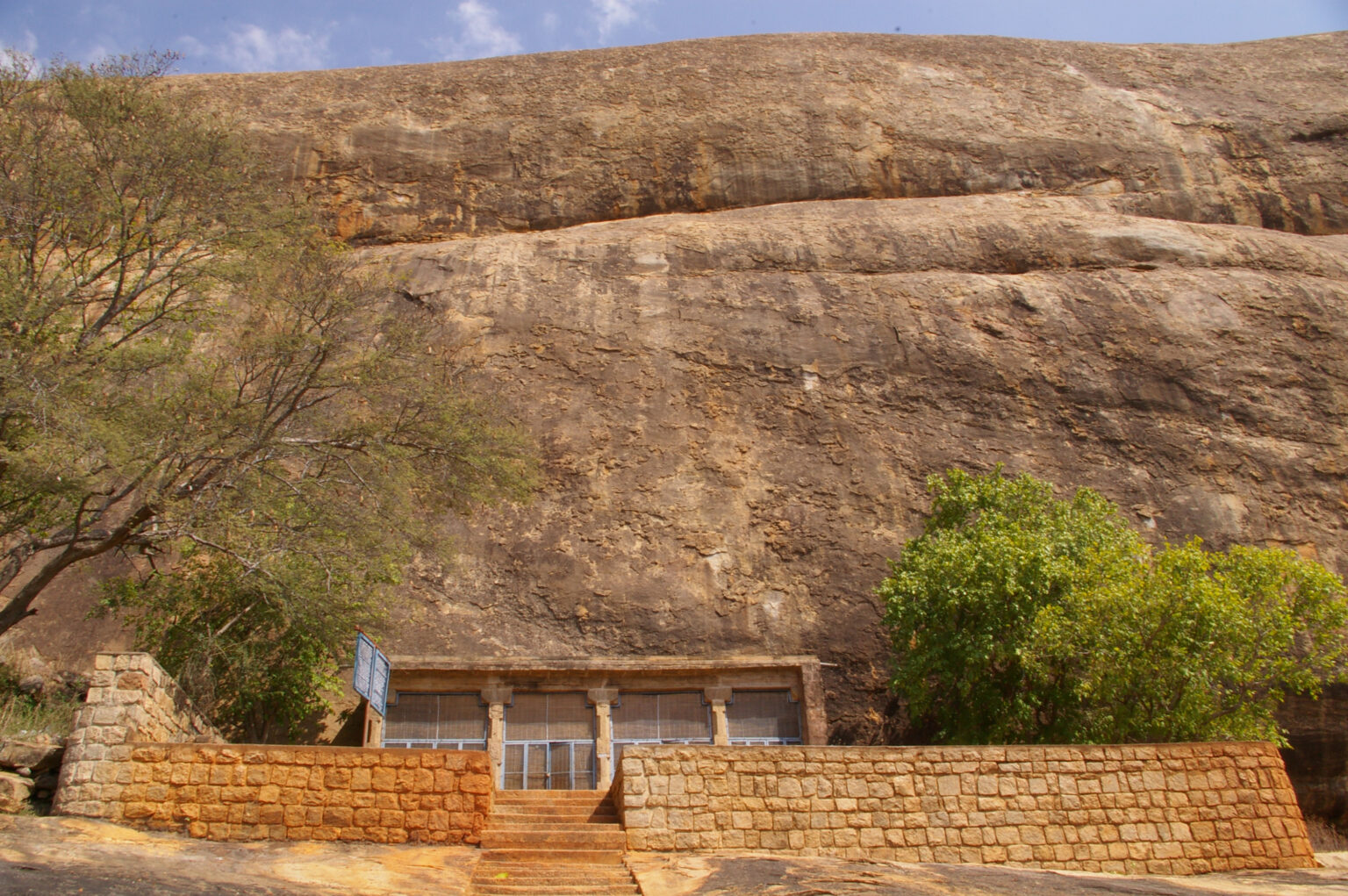Sittannavasal is a village in the Iluppur taluk of Pudukkottai district, Tamil Nadu. This monument is located at about 12 km northwest from Pudukkottai, 2 km north east from Annavasal, 12 km north from Kudumiyanmalai. Known as Arivarkovil or temple of the Arhats, this rock-cut temple was considered earlier to be a excavation of Pallava king Mahendravarman I ( CE 580-630) before his conversion from Jainism to Hinduism. However, considering its geographical location in the Pandyan King, this cave-temple is now assigned to the reign of Pandyan king, this cave-temple is now assigned to the reign of Pandya kings Maran Sendan AD (654-670), when the Pandya rule was at its high and the later was a Jain prior to his conversion. The façade, slightly cut into the original rock-line, has two pillars and two pilasters with square base and top with interveaning octagonal portion. There is an ardha-mandapa behind with a square sanctum at the back. The entrance to the sanctum has a flight of steps with balustrades. There bas reliefs in the ardha-mandapa of Parsvanathar (northern niche) seated in dhyana pose with fie hooded serpent above the head and of saint seated in dhyana pose (southern niche) under a single umbrella. There is a label inscription reading Tiruvasiriyan. In the sanctum on its back wall are three more bas-reliefs of two Jaina Tirthankaras as denoted by the triple chhatris and an Acharya. However, the most significant feature of the cave-temple is the occurrence of mural paintings depicting the theme of Samavasarana, the most delightful of Jain heavens, and particularly the second bhumi viz. khatika-bhumi or region of the tank. The paintings depicts a vast tank full of lotus flowers. Also depicted are bhavyas or the faithfuls, elephants and fishes, one of them is flying out of waters. This scene was painted as a canopy on the ceiling of the ardha-mandapa. On the pillars, are painted beautiful picture of two dancers at two places and three figures identified as the king strimara Srivallbha and his queen paying respects to Ilam Gautaman, and Acharya from Madurai. Upon cleaning the paintings, another layer of painting was also discovered depicting the same Samavasarana theme in a carpet design in the garbha-griha. These paintings executed in a superior fresco technique to that of Ajanta, has shades of influence of that school in idom.

